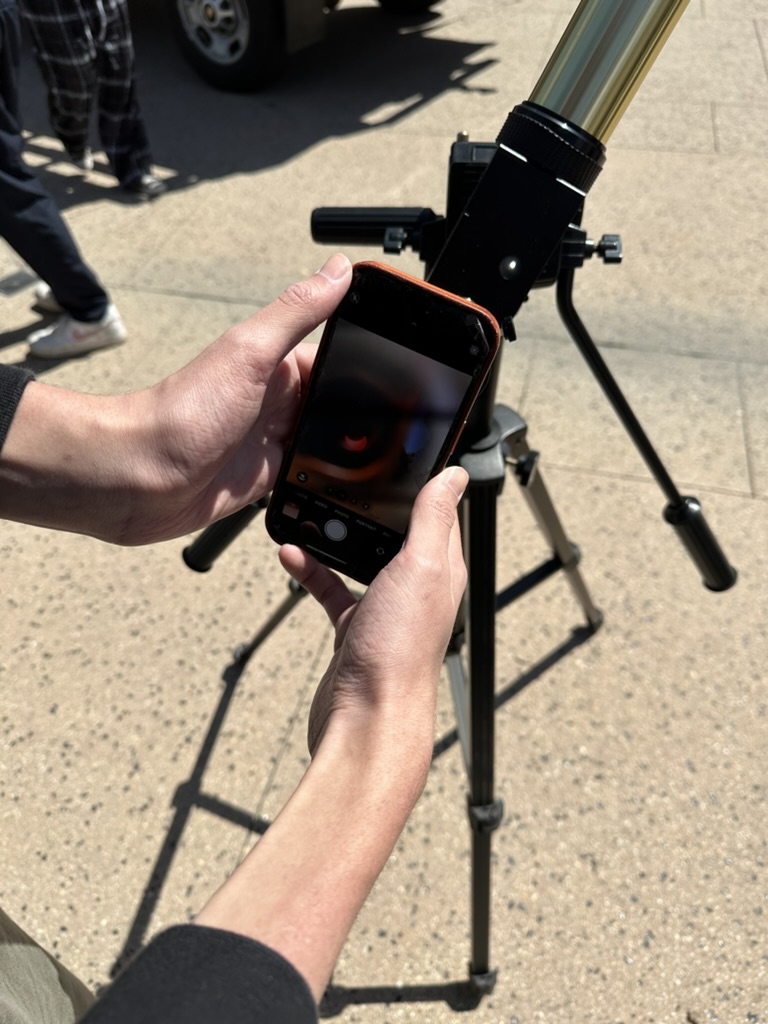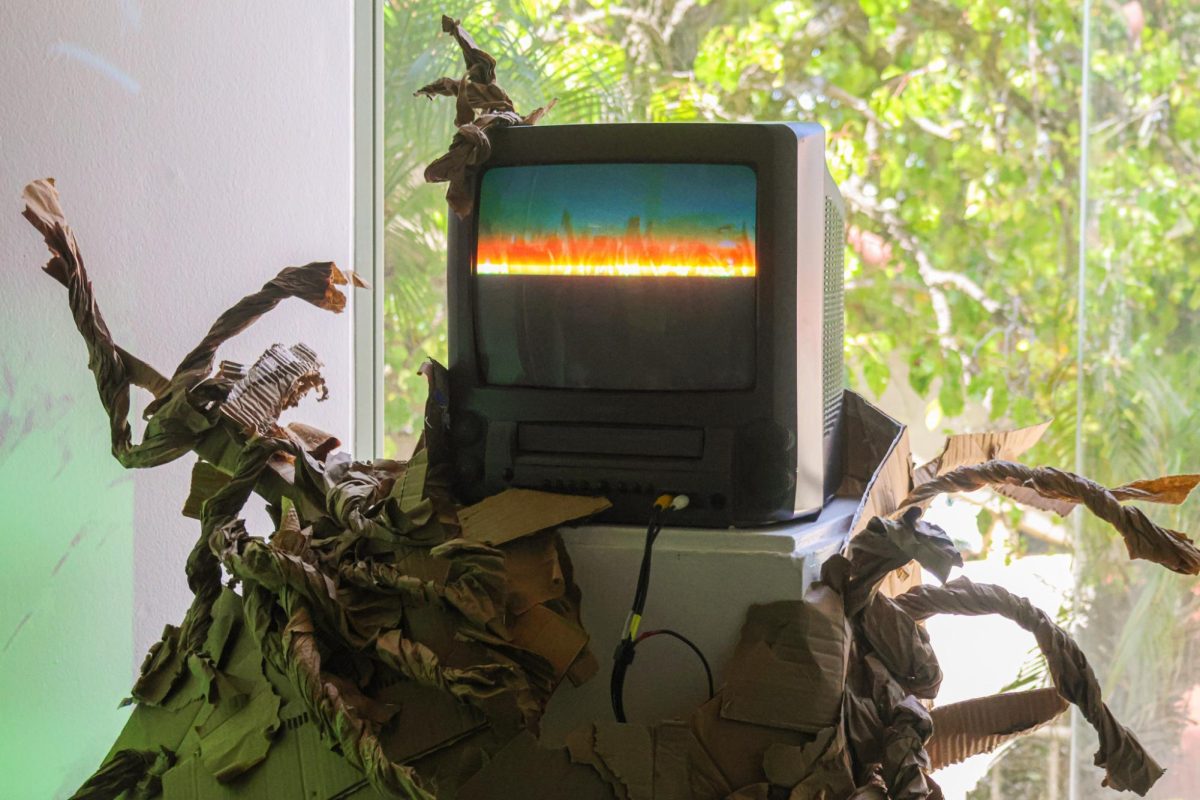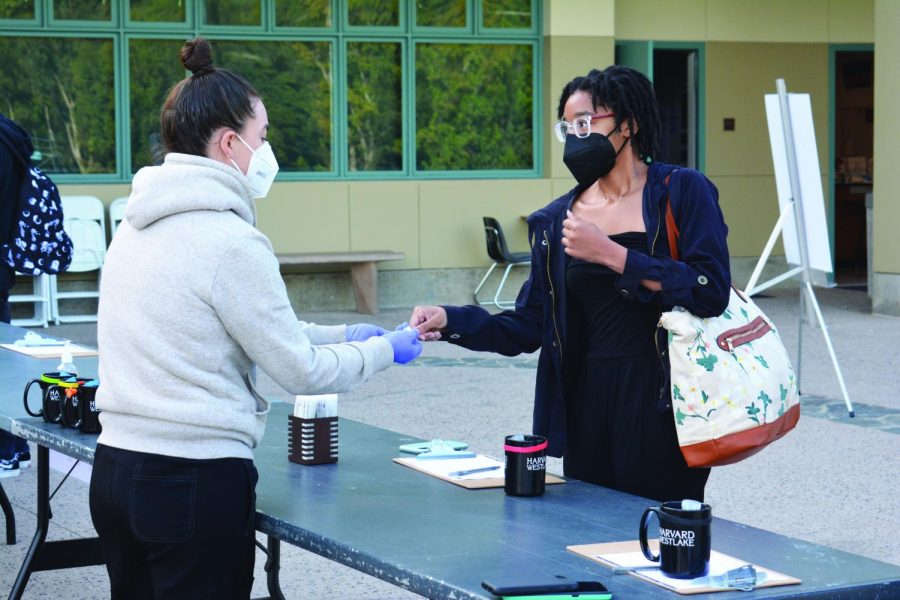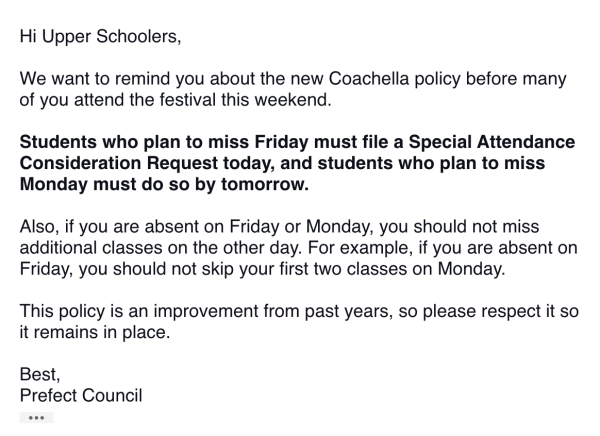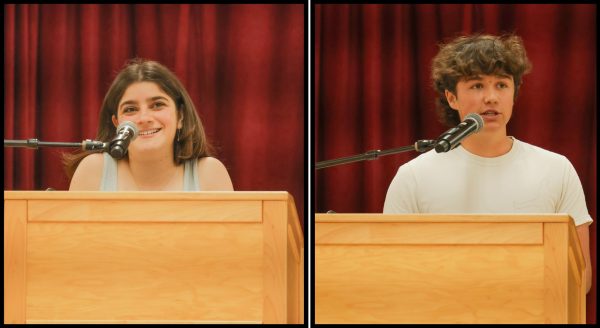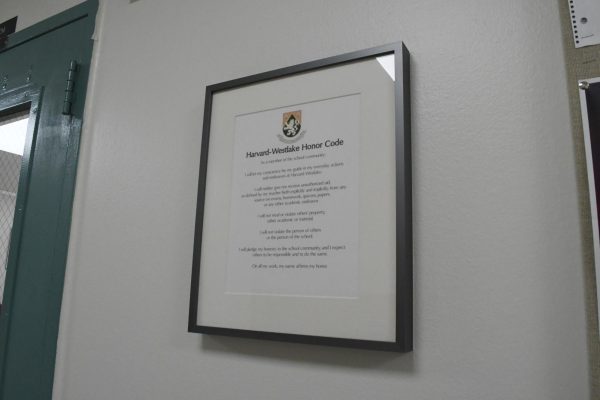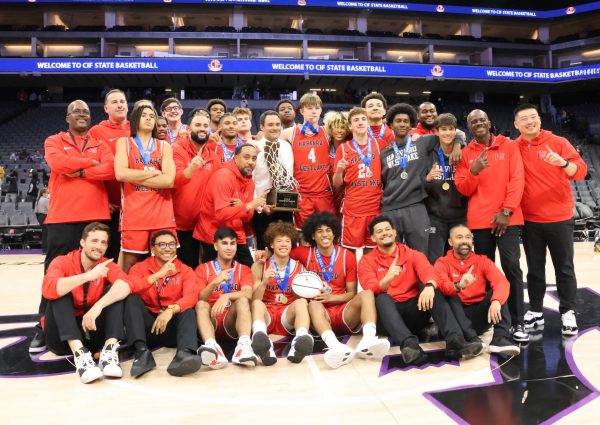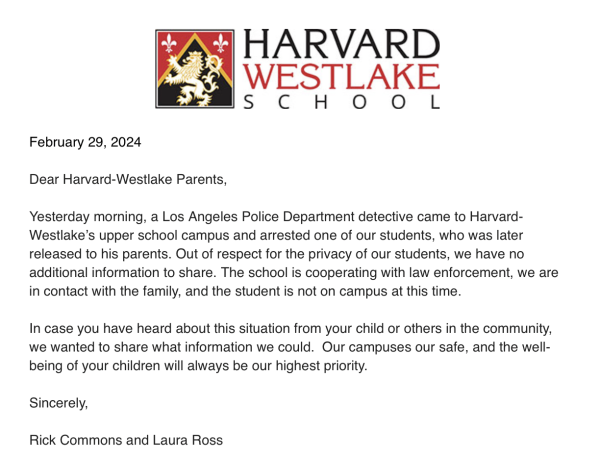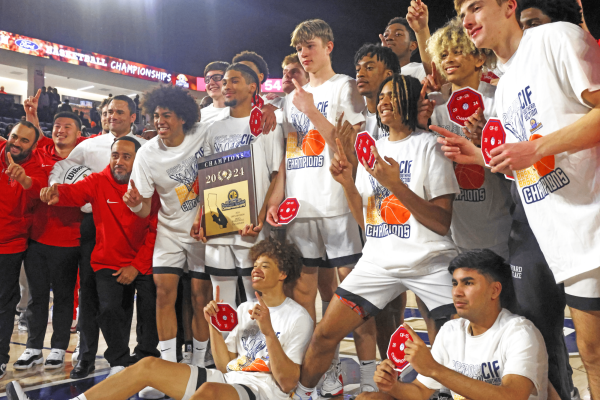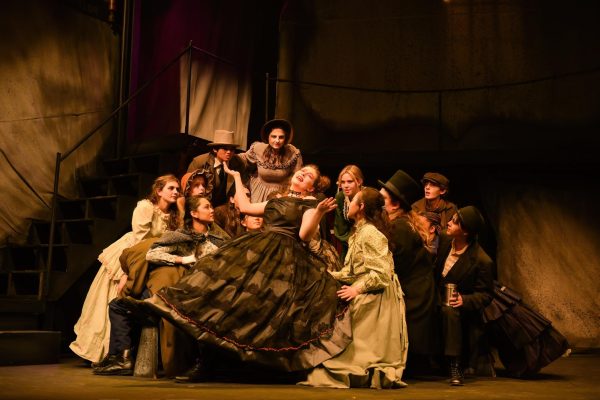Students attend school on campus together for first time in over a year
A Daily Dose: Chandace-Akirin Apacanis ’21 gives her nasal swab to Upper School Nurse Becca Pilgrim for pooled testing outside of the Munger Science Center in adherence with COVID-19 protocols before her class.
May 29, 2021
The school welcomed sophomores, juniors and seniors back to campus May 17 after conducting most of the 2020-21 school year virtually. The school’s decision to reopen campus at full capacity came as Los Angeles County moved into the yellow tier for COVID-19 and after students returned to campus two to three days per week in grade-level pods.
COVID-19 safety measures will remain in place through the end of the school year.
COVID-19 safety protocols such as wearing masks, maintaining social distancing and undergoing routine pooled COVID-19 testing will remain in place throughout the rest of the year.
Los Angeles County entered the yellow tier, or minimal country risk level, May 6, a May 4 County of Los Angeles Public Health press release reported. In the yellow tier, most indoor businesses are allowed to open, albeit with restrictions, according to California For All, the state’s official website. Nationally, California has the seventeenth-lowest COVID-19 case rates as of May 14, according to Statista.
Although students are currently not required to attend school in person and may continue to attend remotely, Associate Head of School Laura Ross said the school will not follow a hybrid model during the 2021-22 school year. However, she said the school may offer alternative ways of learning online for students who are absent or need to leave early.
“Our plan is to be completely in person,” Ross said. “It is very difficult for teachers to try to run a full, immersive, engaging class for two constituencies. We don’t intend to use a hybrid model next year. We intend that Zoom will not be a part of daily life, but [we are considering] ways that we should be thinking about using Zoom to support the needs of students.”
The school’s decision to invite students back to campus at fully capacity is the school’s most recent step in its phased reopening approach.
After President Rick Commons announced both the upper school and middle school campuses would be closed indefinitely March 11, 2020, restricted on-campus sports practices began for two weeks in July and resumed Aug. 24. Students were first invited back to campus for small group social activities Nov. 9, but a surge in COVID-19 cases in early December led the school to suspend all on-campus activities and athletic practices beginning Dec. 23 and then again Jan. 8.
Athletic practices resumed Feb. 1 and grade-level social activities started Feb. 14, followed by the implementation of a grade-level pod approach in which students participated in online classes while on campus March 9 and a return to campus for in-person instruction April 19. The most recent reopening plans came after Commons and Head of Upper School Beth Slattery announced plans for students to attend in-person classes more frequently, giving seniors the opportunity to come to campus for school every day for the rest of the school year April 26.
Students compared remote learning to attending school on campus.
Idalis McZeal ’23, who returned to campus for track and field practices before participating in the on-campus pod activities in February, said she enjoyed the social aspects of the recent return to campus.
“I think just being able to talk to people and trying to reconnect with people I’ve only seen online has been a very beneficial experience,” McZeal said. “I thrive off of social interaction, so I think the [return to campus] has been something that’s been very good for my mental health overall.”
Santiago Salazar ’21 said he appreciates the structure on-campus learning gives him.
“I learned from myself that I really benefit from school giving me instruction in the day,” Salazar said. “Harvard-Westlake has been great in allowing for a [daily] schedule [even while learning remotely], so it’s not completely hands-off. But I think I really benefit and have a better work ethic from going to an actual physical school and having that part of my routine be defined throughout the day.”
Although Caroline Rediger ’22 said she has not yet returned to campus for in-person learning because remote learning helps her manage her schedule, she said she would like to return to school.
“I wanted to come [to school on campus] at least a few times,” Rediger said. “I’ve just been so busy with schoolwork, and sleeping in an extra hour every morning really helps [with] being a junior at Harvard-Westlake.”
Community members reflected on their experiences attending school on campus.
Though she acknowledged the challenges posed by the implementation of the block schedule with all three grades back on campus, McZeal said she missed face-to-face interactions while learning remotely.
“Even though it’s crowded and getting lunch and finding tables is more difficult [with all three upper school classes on campus], I missed being able to connect with everyone like it was before,” McZeal said. “I really like going to school with everyone [on campus].”
Commons said he is grateful that the 12th grade class fostered a strong sense of community spirit during this unconventional school year.
“Even when we were remote, the seniors set the tone of resilience and optimism and connection despite the challenge,” Commons said. “When we were able to come back, the seniors set the tone of joy and the importance of community […] That tone, I think, not only has echoed through the juniors and the sophomores and the faculty and staff, but it will continue to echo […] It will continue to echo in the school that being together matters and caring about Harvard-Westlake matters and [that] we can get through anything together.”
Commons also said he hopes that the ability to connect with one another in person will allow for greater unity within the school community.
“Now that it appears that we have come together physically, I am eager to see us come back together ideologically,” Commons said. “We’ve been apart from one another, and we haven’t been as successful as I would like us to be in finding common ground together. My expectation and great hope is that as we come back together physically this spring and next fall, we’ll be working together to figure out how those of us who see things differently can stand together on common ground and learn from one another in positive ways that don’t divide our community but unite it.”

